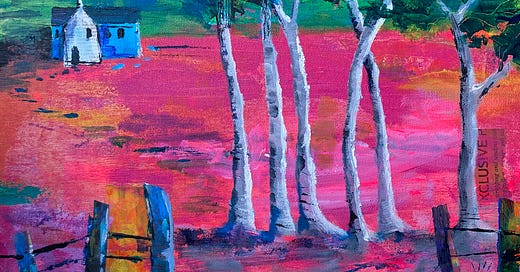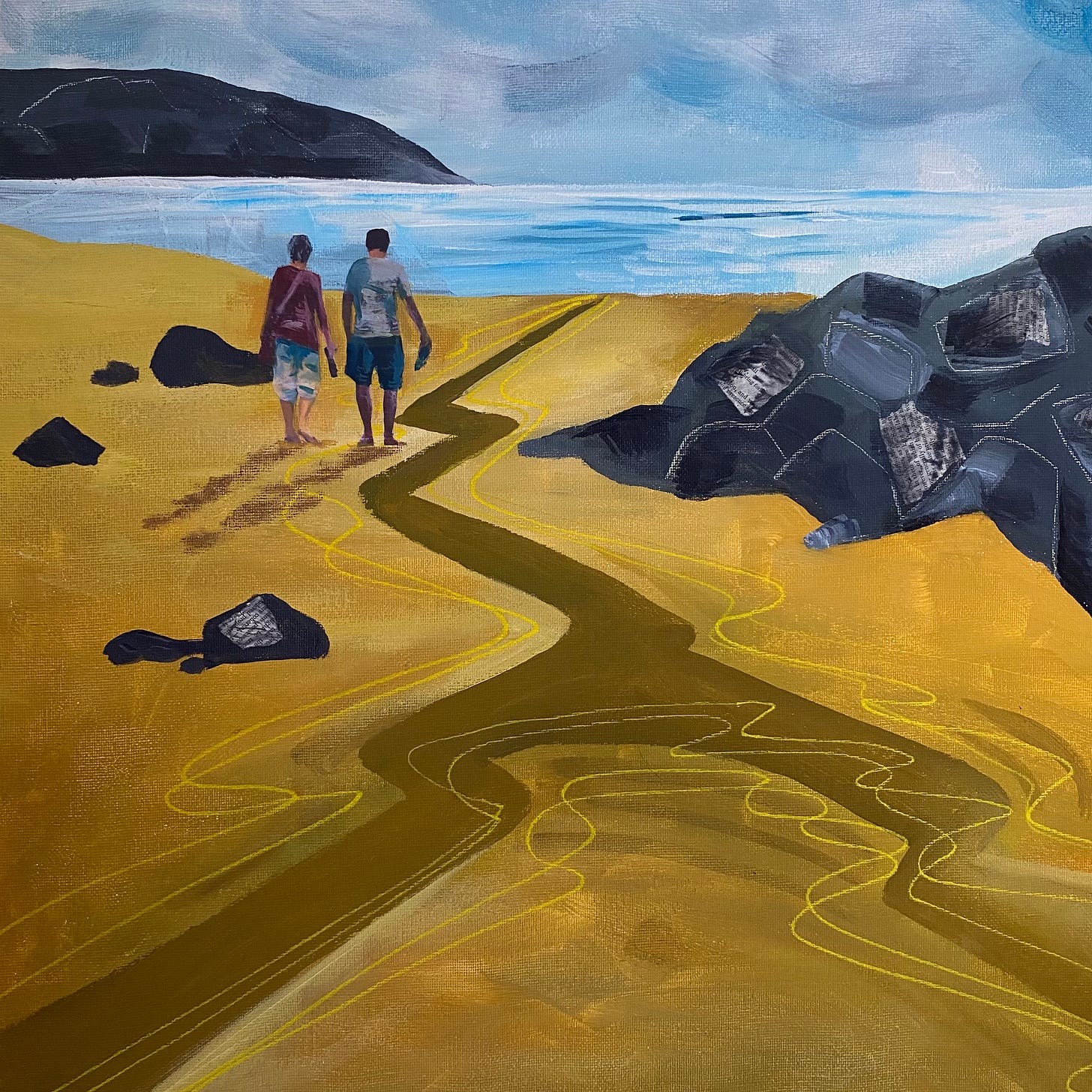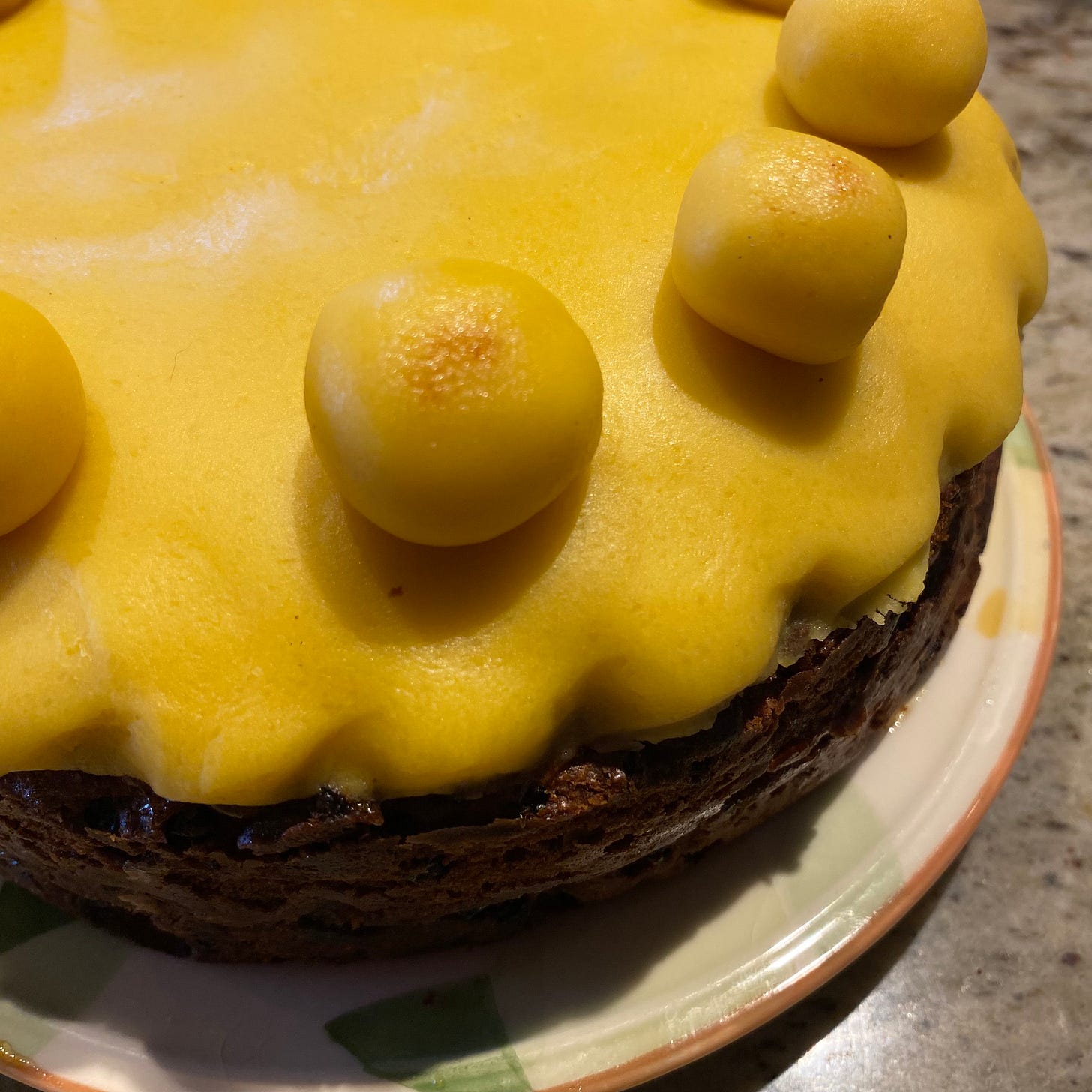As it is Easter this week I have decided to take a break from writing anything new as I want to work on some other things, (dare I say it… some paintings) and instead I have updated and rehashed a couple of old blog posts that seem relevant follow ups to last week’s post. I mentioned in passing last week that there is an awful lot of ‘art bollocks’ spouted in the world of picture making, especially when it comes to artists’ statements. As I type I have just had a warning come up that the particular word I have used might be offensive to my readers. Apologies… no offence meant but it seems the most appropriate word to describe the pretentious claptrap that is often written about art. It’s not a new phenomenon either, as back in the eighteenth century the president of the French Academy complained about the ‘vapid and bizarre jargon” used by artists and critics when describing paintings. But there is no denying that making art does also require a certain amount of writing.
It might be true that a picture paints a thousand words and we could argue that our art should speak for itself, but visual communication alone is not always enough. We still need words to talk about our art with others and to make an emotional connection.
We need words to talk to potential buyers, to share our ideas with other artists and possibly to connect with gallery owners and curators. We need words on our websites, our paintings need titles and even our social media posts need captions or words to offer some explanation. It is rare that a picture alone can tell the whole story. We might have a newsletter to send out that needs to keep our subscribers informed and entertained. And then there are other things like grant applications, press releases and even those dreaded artist statements. In short, we need to be able to tell our story in words as well as pictures if we are serious about art making.
The Way Home, Acrylic and mixed media, 2023 - does it need words or does it tell a story?
Creating the art itself is not enough. It is also useful to develop a habit of writing about ourselves and our art as a means of expression and communication. It’s absurd to think we might just sit down to write and find the words we need as and when we need them. Instead, it is a habit we need to develop and cultivate. Like anything else we must work at writing if we want to do it effectively and well. But how do we do that?
For many people one of the most obvious ways, although I have found it’s not necessarily for me, is to cultivate a journal habit. Although I have kept journals in the past I struggle to make it a regular habit. The beauty of journalling is that it is a private writing space that you do not have to share. It’s a place where you can pour out your inner most thoughts and ideas. For some people making this a regular habit at a set time of day works for them. Many years ago, I tried to follow The Artist's Way by Julia Cameron which involved writing morning pages. The advice is to write three pages of a handwritten stream of consciousness first thing every morning. But I hated doing it and could never think of what to write. It felt forced and contrived. And some mornings I wanted to get up and go for a walk not sit and write for half an hour. I hated feeling as though it was something I was obliged to do. When I found myself repeatedly writing “I don’t know what to write today” I realised that regular journaling was not for me and instead now I tend to keep different notebooks in different places, in my bag, on my desk, beside the bed etc. I write when the urge takes me, I make notes about things that I hear on the radio or in podcasts, I write about things I see, things I read, observations, thoughts, ideas… absolutely anything goes. I cut articles out of magazines and newspapers and paste them in, or sometimes I will doodle a little illustration because I just can’t help myself. There are weeks when I do it regularly, and other times not at all, but I do know that the more I write, the more ideas I have and the easier it becomes to write about my art. Some of these written musings may never see the light of day but that doesn’t matter. What matters is the actual writing.
Memories of Hahei, Acrylic and mixed media, 2021… what’s the story?
But you can make up your own rules for your journaling or writing as you go along. Your journal can be handwritten in a book, scribbled on bits of paper or typed on a laptop. You can set aside a regular time for 10-15 minutes a day or like me, you can do it when the fancy takes you. You don’t need to have rules and you don’t need to be writing perfect sentences. You are just getting ideas out of your head and into written words that you can call on when you need them. By making it a regular habit it allows you to communicate effectively about your art (or whatever it is you wish to write about) and make emotional connections with your followers.
The other form of writing that I enjoyed for many years was writing a blog, which I guess is a form of public journaling. But like many people I fell out of the habit. I used to write regular blog posts, sometimes several times a week, about art, family, food or anything else that took my fancy, although truth be told it was more often about cake than art. And the posts about cake always got a much bigger response than anything else I wrote about, so I’m not sure what that tells me. People like food better than art? Or maybe I should concentrate on food writing? Whatever, I had a loyal following and made many friends through blogging, but over the years it tailed off as other social media platforms took over and the tribe that started out blogging together slowly disappeared.
Cake or Art? I made my simnel cake!
For a while Instagram seemed a good replacement to blogging as a way of posting something quickly, although not such a great tool to keep up a regular writing practice; just a picture or two with a snappy caption. But as with all things that has also changed. The platform has grown, it has been taken over by Meta and it’s no longer about making connections with followers, instead it’s all about advertising and paid content. Currently my feed is being bombarded by Joe Wicks and Stanley Tucci! (I’m not complaining!) It is becoming harder to be seen by our followers or see those we are following.
Now it feels like I have come full circle back to the world of blogging via Substack. There are notes for the short form writing, often a caption no more than a sentence long that can be accompanied by a single photograph or image, and for me once a week there is a slightly longer essay. I still write longhand in several different notebooks, occasionally on scraps of paper, and sometimes there are typed notes on my laptop or phone. Some ideas end up here for you to read, hopefully coherent and jargon free, whilst others never leave the privacy of my notebooks.
Do you write about your art? Do you journal or write a blog? And maybe more importantly, what do you like to read about? I really would like to know.
Yes, a picture can often tell its own story, but we sometimes we need the words too. Just not pretentious claptrap. And I’ll finish with some great advice on writing from Stephen King.
“The road to hell is paved with adverbs”
because the best writing is always sparse and leaves something unexpressed.
Wishing you all a very Happy Easter!










I think of my Substack as a blog and as a journal. I tried the Artist's Way too - not for me!
You have given this 80 year old permission to ease up on perfectionism and continue scouring my chair side table for one of my notebooks to jot down “pretentious claptrap” and “vapid and bizarre jargon.”